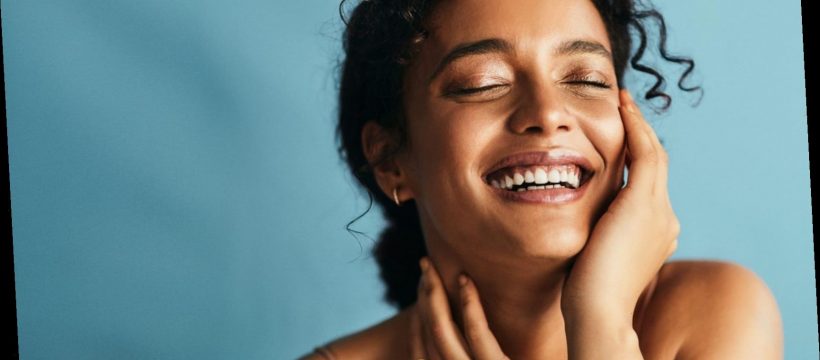When considering which skincare products are right for you, there may be one crucial factor to consider that you haven’t thought about. Stylist looks into which textures suit each skin type and concern.
From the basics like day and night moisturisers to the flashier products likelactic acid peels and essences, the beauty world’s skincare offering seems to expand every year. But finding a skincare routine ideal for your skin isn’t just about navigating lists of ingredients and endless product categories, you also need to consider the formula’s texture.
A product’s texture actually makes more of a difference than you think. Different skin types will absorb thicker creams and thinner liquids differently, and this may affect the results you get from using a product.
When our skin absorbs product, there are three barriers it has to penetrate: the epidermis, the dermis and the subcutaneous tissue. There’s a lot of layers to get through and some ingredients actually absorb better than others. For instance, a retinol of any strength absorbs a lot easier than other ingredients which may take more than five minutes to sink into the skin.
We spoke to Chris Luckham, skincare therapist for FOREO, about which product textures work best for each skin type and concern.
Which textures are best for acne-prone skin?
The cleanser: acne-prone skin can be sensitive to certain textures such as foams, but other formulas work more efficiently. “You’ll want to focus on gel like a perhaps a salicylic acid based cleanser. These ingredients really penetrate into the pores,” says Luckham.
The exfoliator: it’s best to avoid physical scrubs to reduce the risk of aggravating the skin. Instead, opt for a liquid exfoliator if you do use one. Try Paula’s Choice Calm 1% BHA Exfoliant, £26, if you’re looking for a gentle exfoliant that still works to unclog pores.
The mask: clay and cream textures will be your best friend when it comes to masks. “Products containing cica, witch hazel, green tea and allantoin all work really well for this skin condition,” adds Luckham.
Which textures are best for skin with rosacea?
The cleanser and moisturiser: “Stick to milky or creamy textures for cleansers and moisturisers. Always use a device like the FOREO Luna, £169, to cleanse as this will exfoliate daily without any harshness.” Try SkinCeuticals Gentle Cleanser, £35.
The face mask: it’s best to stick to light, creamy textures as they don’t aggravate the skin as much as clay and oil-based masks when you remove them. Ingredients wise, there are a few that may work best. “Try rosehip which is really calming, ceramides that help keep in moisture and niacinamide as this supports ceramides.” Niacinamide is known for its redness reducing powers.
Which textures are best for dry and dehydrated skin?
The cleanser: embrace the creamy and milky textures, as they’re best for maintaining moisture levels. “Humectant based toners are also a great at providing a hydration hit and will only make the next steps more effective. Try hyaluronic acid or niacinamide based formulas,” says Luckham.
The moisturiser: go for a thicker cream, like Cerave’s Moisturising Cream, £13. “Look for ceramide or hyaluronic acid based moisturisers which don’t just rely on silicone. They offer a false sense of hydration,” explains Luckham.
The face mask: hydrating overnight masks like the thin gel-like mask from Drunk Elephant’s F-balm Electrolyte Water Facial, £44, really seals in moisture. Gel textures are usually cooling and hydrating and infused, perfect for drier skin in need of moisture.
Which textures are best for oily skin?
The toner: liquid acid toners are great for decongesting pores without stripping skin.“Exfoliate using a toner focused around salicylic or lactic acid as this can help declog pores.”
The moisturiser: “Keep your day moisturiser light, look for oil-free formulas that are usually much more gel-like. In the evening make sure to feed the skin with a thicker textured cream. Hydration is key even when we suffer with excess oiliness,” recommends Luckham. Try Kate Somerville’s Oil Free Moisturiser, £55, for the evening.
The face mask: similar to clay masks for acne skin, face masks that unclog pores are important for oily skin. Clay is known for being great at absorbing excess oil. Try Sand & Sky’s Australian Pink Clay Mask, £36.90.
Which textures are best for combination skin?
The cleanser: focus on hydrating cleansers like CeraVe’s Hydrating Cleanser, £9.50, that are usually water-based and have a lighweight cream texture. “Put even more of a focus on hydration, because this skin type craves deep hydration in certain areas,” explains Luckham.
The moisturiser: a lightweight cream would work best, like Kiehl’s Ultra Facial Cream, £26. “Try incorporating hyaluronic acids, ceramides and niacinamide in your moisturisers.”
The face mask: double masking is a great option for combination skin as it targets each area specifically. If you’re looking to tone down oiliness, clay textures work best, whilst exfoliating, resurfacing and gel masks suit all skin types.
Images: Getty images and courtesy of brands
Source: Read Full Article
